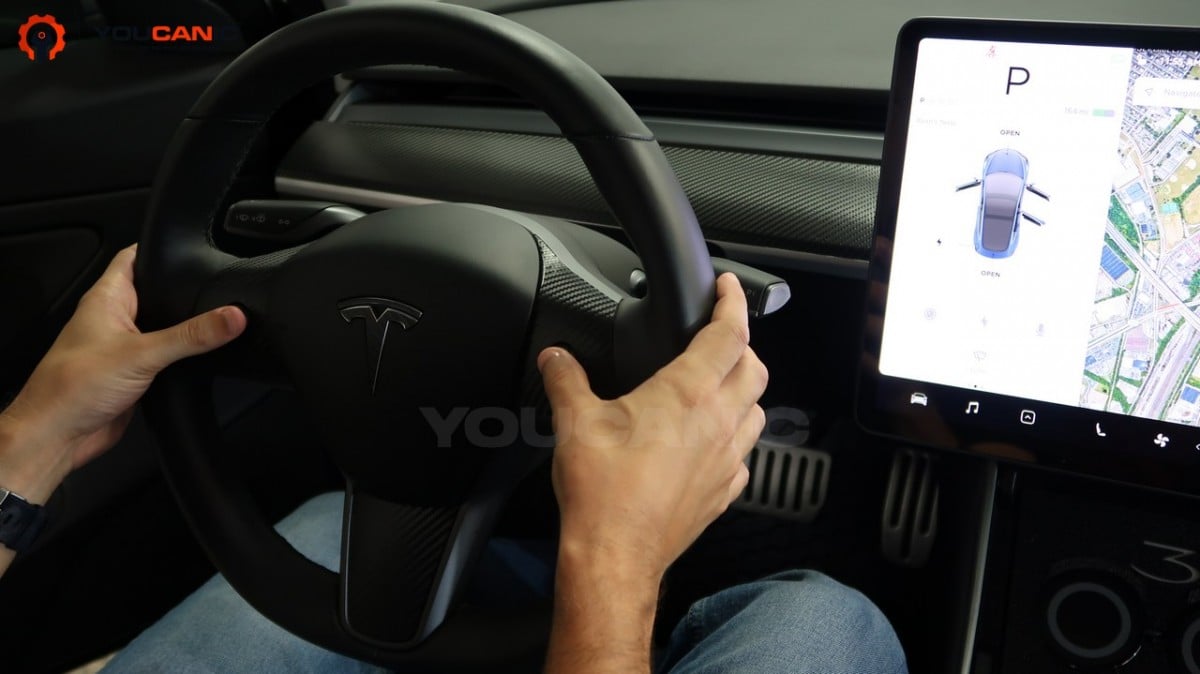Tesla Reboot and Reset Procedure
Powerful computers control Tesla vehicles. Tesla vehicles, like Windows desktops, require periodic system reboots.
Resetting or rebooting your Tesla can solve several minor and major issues you may be experiencing, such as:
- Frozen or unresponsive touchscreen
- A/C Keep running
- The Center screen is stuck off-center
- Blank screen of death
- The Tesla app won’t connect.
- Black touchscreen
- Autopilot malfunction
- AP/Cruise not available
How to Perform Tesla Reboot and Reset Procedure
In most cases, leaving the car parked for a few hours will fix most of these problems as the car will go to sleep, which reboots when you wake it up.
- Reboot: Hold both steering wheel buttons and press the brake until the screen goes black. Continue holding until the Tesla logo appears. Then let go.
- Power Off/On: Under Vehicle Controls -> Safety and Security > Power Off (wait 2-3 minutes before pressing the Brake).
If leaving the vehicle parked for a few hours, a system reboot will not fix the problem. A system restart can fix these and many other issues. Let’s look at various methods to reboot a Tesla if something goes wrong.
How to Reboot / Reset a Tesla

We recommend that the car should always be stationary and in a safe place before rebooting the car.
It is recommended that all USB devices be unplugged before rebooting. USB devices such as phones can prevent some subsystems from shutting down.
Option 1: Soft Reset -Reset Tesla Using the Steering Wheel Scroll Wheel
A soft Reboot or Reset is straightforward. Hold down both steering wheel buttons until the screen goes black, and continue holding until the Tesla logo appears. Then let go.
- Press and hold both scroll wheels on either side of the steering wheel.
- Keep the buttons pressed for up to ten seconds.
- After ten seconds, the main screen will reboot.
While rebooting, you should hear a clicking noise, which is normal.
Option 2: Top button reboot (MS and MX only)
- Press and hold both buttons above the scroll wheels on either side of the steering wheel.
- Keep these buttons pressed for up to ten seconds, and the driver’s touch screen should reboot.
Option 3: Full steering wheel hard reset using the brake pedal
You must sit in the driver’s seat and close the doors for this reboot. To successfully perform the hard reset procedure, keep the doors closed and not open for a reboot.
- Get inside the car and close the driver’s door.
- Press the brake pedal and keep it pressed.
- Press and hold both buttons above the scroll wheels. You may have to press the scroll wheels on either side of the steering wheel (MS and MX) or just the scroll wheels (M3)
- Press buttons for up to 10 seconds, and the driver’s touchscreen will reboot.
- Continue to keep the brakes pressed as the system restarts.
If the above steps don’t work, try the following:
A Tesla hard reset, also known as a “Power Cycle,” can be performed while the vehicle is in PARK.
- Close doors.
- Go to Controls, Safety, and Security, and select “Power Off.”
- Do not touch the brake or open the doors for 3 minutes.
- Then, touch the brake to power back up.
Option 4: Tesla Hard Reset / Power Cycle / Pown and Restart
Sit in the car with the door closed, and don’t touch or open the door other than follow the instructions. This is also best done where it’s quiet, as listening to the car can help; otherwise, pay attention to the time.
- Get inside the car and close the doors. Do not press any other buttons.
- On the main screen, bring up the service menu.
- Next, select “Power Off.”
- After a while, the screen turns off, allowing the system to shut down for a few seconds.
- Allow the vehicle to stay turned off for a few minutes.
- Press the brake pedal to wake up the car.
Option 5: Tesla Factory Reset Procedure
- Controls > Settings > Service & Reset > Factory Reset > Erase & Reset
We hope you find the Tesla Reboot and Reset Procedure guide helpful. Check these troubleshooting and repair guides for more help on your Tesla.









